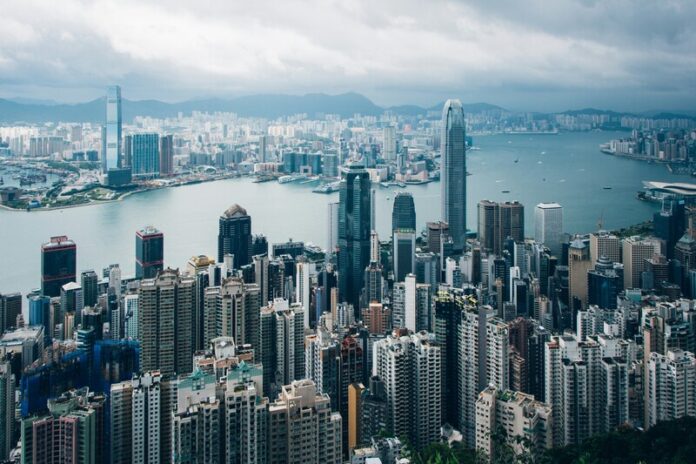- Asia is well-positioned to spearhead a new agenda rooted in global connectivity and collaboration.
- This agenda must serve three key common interests: promote globalization, address demographic change and tackle climate change.
- This is an exciting time. Asia stands at the threshold of a significant opportunity to lead and ensure prosperity for all.
What role can Asia play in the changing world order? I believe Asia has a unique opportunity to assume a leading role, one deeply rooted in global connectivity and collaboration to serve shared interests.
Over the past 50 years, Asia’s remarkable growth has been fuelled by enhanced global connectivity and collaboration.
This dynamic has fostered greater integration and leveraged the region’s diversity, spurring trade and investment while delivering prosperity and improved living standards within Asia and globally.
In today’s world, where geopolitical friction and trade tensions often make headlines, it is crucial that we maintain our commitment to global connectivity.
As the world’s leading economic bloc and one of the largest contributors to global growth, Asia is well-positioned to spearhead a new agenda focused on common interests that reinforce global connectivity and collaboration.
Identifying common interests
What are these common interests? I see three key areas:
1. Promoting globalization
We must maintain and propel the forces of globalization that have generated prosperity worldwide.
2. Addressing demographic changes
We must anticipate and respond to significant demographic shifts and reinvigorate our economies.
3. Tackling climate change
It is essential to acknowledge the reality of climate change, recognize its effects on all of us and respond appropriately.
How is the World Economic Forum ensuring sustainable global markets?
More connectivity, not less
To achieve these shared goals, we need more global connectivity — not less. This connectivity should unite Asia’s diverse nations, trade hubs, capital pools and vibrant consumer markets.
Asia is already leading the way in this regard, with numerous free trade agreements, like the Regional Comprehensive Economic Partnership, driving economic integration, tariff reductions, and supply chain efficiency.
For instance, in 2023, we saw a record $230 billion in foreign direct investment (FDI) in the Association of Southeast Asian Nations (ASEAN) region, alongside $18 trillion in trade within Asia, compared to $13 trillion in 2013.
Physical infrastructure also plays a crucial role. Projects like the Trans-Asian Railway Network and the India-Myanmar-Thailand Trilateral Highway demonstrate what can be achieved by linking multiple Asian countries, facilitating trade, reducing transport costs, and enhancing regional integration.
And Asia’s connectivity extends beyond the region. We are increasingly forging strong ties with Africa and Latin America, evidenced by rapidly growing trade volumes between China, India and these regions. In Latin America, Asia’s share of trade in goods has nearly tripled over the past two decades, resulting in significant cross-regional partnerships in infrastructure, energy and mining.
Collaboration, not decoupling
Beyond signing agreements and building infrastructure, we must foster more collaboration across borders. This includes collaborating to transfer expertise, scale renewable energy infrastructure and advance decarbonization efforts. Recent investments in renewable energy and clean technology projects, such as solar parks in India, battery plants in Indonesia and EV factories in Thailand, exemplify this commitment.
Furthermore, sharing groundbreaking innovations, such as AI-driven healthcare technologies and diagnostic platforms from leading Chinese firms, is crucial for improving access to affordable care in countries like Indonesia and Thailand and addressing the needs of ageing populations. Building new platforms for growth through investments in 5G infrastructure across Asia also enables smart city development, IoT applications and sustainable urban transport solutions.
Finally, promoting cultural exchanges, such as arts and education initiatives, to foster mutual understanding across Asia and beyond and investing in youth leadership programmes can empower the younger generation as agents of change.
A call to action
This unique mixture of global connectivity and collaboration powers progress, but there is still so much more to do: new industries to pursue free trade, new technologies to scale up, such as hybrid microgrids for rural areas and vertical farming to advance supply chains, and new sectors to develop, such as advanced materials and software.
From our vantage point at HKEX, at the heart of Asia’s financial markets, we see it as our role to drive the global connectivity and collaboration essential for the progress we envision.
In the past two years, we have enhanced our Connect programmes more than in the previous eight years combined, connecting China more closely with the world.
We have also increased the depth, diversity, and vibrancy of our markets to connect capital with opportunities. We have expanded our global footprint, with offices in New York, London, and soon Riyadh. We have also deepened partnerships with exchanges in Saudi Arabia, Indonesia, Abu Dhabi, and Dubai.
This is an exciting time to be in Asia, not just for investors, issuers, and innovators, but for everyone.
Asia stands at the threshold of a significant opportunity to lead in the evolving global landscape, championing global connectivity and collaboration to ensure prosperity for all.
As we gather for this year’s World Economic Forum Annual Meeting, let us continue to find ways to collaborate, connect capital with opportunities, and create a more integrated, resilient, and prosperous future for Hong Kong, Asia, and the world.

